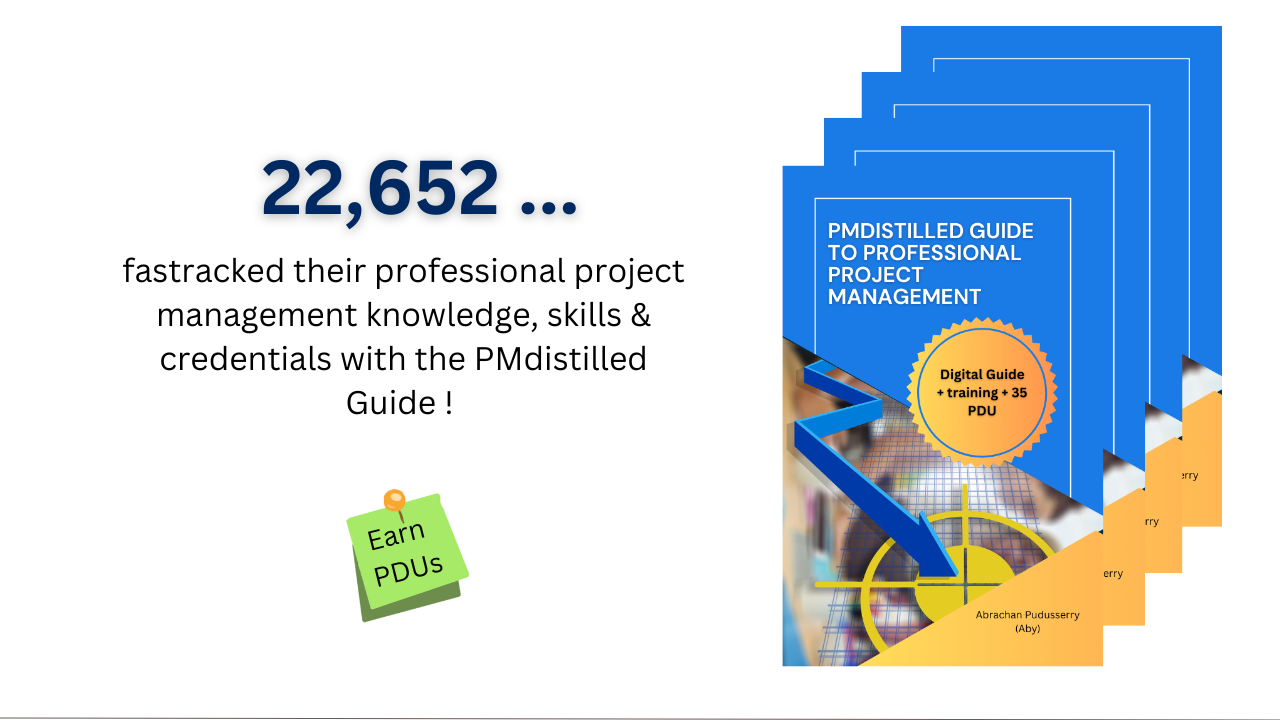Welcome to the exciting world of professional project management. The PMdistilled Guide will help yopu to master professional project management in the shortest possible time. If you want to convert your learning effort into a instructor assisted course, that option is also possible.
This digital guide is for all those who want to master professional project management according to globally accepted project management best practices.
The fact that more than twenty thousand professionals benefitted from PMdistilled is the proof of its effectiveness.
If you are a self learner and want to master complete professional project management, then I urge you to read the complete guide from start to finish.
If your interest is only in Predictive / Traditional / Waterfall project management, then focus on Chapters 1 to 8.
If your interest is only in Agile / Adaptive / Scrum, then read chapters 9,10 and 11.
Chapter 12 focuses on Hybrid Project Management
If you are using this as a reference material of the PMdistilled training, then I urge you to read only the highlighted portions, becuase the detailing happens during the training via lectures, assessments and practice tests.
All learners are encouraged to use the discussion forum to post queries as well as to understand the latest updates to the PMdistilled Guide.
Never study like a student. Study whenever and wherever it is possible using your smart phones, tablets and computers.
I am available to you throughout your learning journey. Feel free to contact me any time.
Wish you Success..


